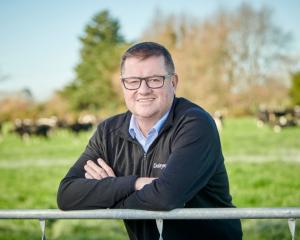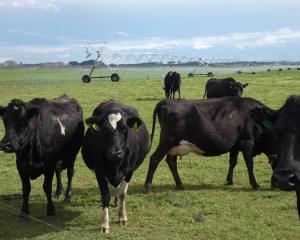
New Zealand dairy farmers are under growing pressure to balance productivity with environmental responsibility. Levy-funded research is developing practical, science-based solutions to help meet these demands.
At DairyNZ’s Lye Farm near Hamilton, purpose-built facilities and a skilled research team are exploring ways to tackle these challenges — from improving feed use and on-farm efficiency to reducing emissions.
The goal is to turn today’s questions into tomorrow’s tools for farmers.
Facilities such as specialised feeding equipment and trained cows allow researchers to test new ideas under New Zealand farming conditions.
Every part of Lye Farm is designed to support robust trials that deliver insights farmers trust and can apply.
As a national resource, Lye Farm plays a key role in developing science-based solutions to progress New Zealand dairy.
This includes research into reducing greenhouse gas emissions — a growing focus as the sector works to meet government targets and market expectations.
A recent addition is 20 new roughage intake control (RIC) feed-weigh bins, designed by Dutch company Hokofarm Group and used in research facilities worldwide. These bins expand the farm’s research capabilities, enabling larger and more targeted trials that generate richer, more valuable data.
This infrastructure also makes Lye Farm a hub for strategic partnerships.
Projects like Emissions4Pasture, run in collaboration with Irish researchers, allow seasonal data to be collected across hemispheres, accelerating insights and helping get practical solutions to farmers sooner.
Lye Farm is underpinned by farmer levy investment and strengthened by collaboration with commercial and research partners, ensuring the science stays grounded in real farm needs and delivers practical, profitable outcomes for New Zealand dairy.
Facilities in action
New Zealand dairy farmers are looking for practical ways to reduce methane emissions without compromising productivity.
Recent research shows cows produce relatively low emissions when grazing good-quality pasture.
One question now being explored is whether supplementary feeds, especially those high in starch or fat, can further reduce emissions when used alongside pasture. To investigate this, DairyNZ has started a "Targeted Supplementary Feed" project at Lye Farm. The research aims to find out whether different types and amounts of starch- and fat-based supplements affect methane emissions in dairy cows. It will also look at how these effects change with seasonal shifts in pasture quality.
The results may show that supplements do not reduce methane, which would still be an important finding, or that only certain types, fed at specific times of year, are effective.
A new trial is now under way using both the existing Calan Gate System and the new RIC feed-weigh bins. These facilities let researchers track each cow throughout the day, giving detailed data on feed intake, feeding behaviour, and how these relate to methane emissions.
Sixty cows are involved in the trial, housed for up to four weeks. They are fed fresh pasture twice daily after milking, mimicking paddock feeding, using a cut-and-carry system, where grass is harvested from the paddock and fed in the individual bins.
This set-up allows precise measurement of how much each cow eats.
In the Calan Gate System, pasture is weighed in and any leftovers are weighed out, giving an accurate forage intake.
The new RIC feed-weigh bins automate this process: when a cow approaches a feeder, her EID tag is scanned, and the bin tracks how much she eats, when, and for how long — offering deeper insights into feeding patterns and methane output.
Cows continue to be milked through the Lye Farm milking shed, and supplements are carefully weighed to ensure each cow receives her allocated amount before pasture is offered. Rumen samples are taken during the trial to monitor changes in the microbiome, helping researchers understand how different supplements affect digestion and methane production.
To measure cows’ methane emissions, the animals have access to GreenFeed units — specialised machines that offer a small amount of pelleted feed to encourage cows to visit.
The GreenFeed unit scans the cows’ EID tags, drops a small amount of pellets (~30g) several times over a four-minute period, and samples the methane, carbon dioxide and hydrogen in their breath.
Multiple visits to the GreenFeed unit throughout the day build a detailed picture of each cow’s daily methane emissions.
By mid-2026, the Targeted Supplementary Feed trial is expected to deliver insights into whether supplements can reduce methane emissions, and if so, what type, how much, and when during the season they are most effective.
The trial will also assess animal performance and economic feasibility, helping farmers weigh up the cost-benefit of using supplements as a mitigation strategy.
These findings will support farmers in making informed decisions about feed use on their own farms, ensuring that any changes can be backed by science and tailored to New Zealand’s pasture-based systems. — DairyNZ












